Visiting the US Naval Academy
You’ve probably sailed past the imposing 338-acre US Naval Academy (USNA) campus 100 times. Maybe you’ve even joined the almost two million annual visitors to tromp around the “Yard” and gawk at the plebes “duck walking” on the quad. Perhaps you are some of the lucky few with a son, daughter, or grandchild enrolled at the USNA.
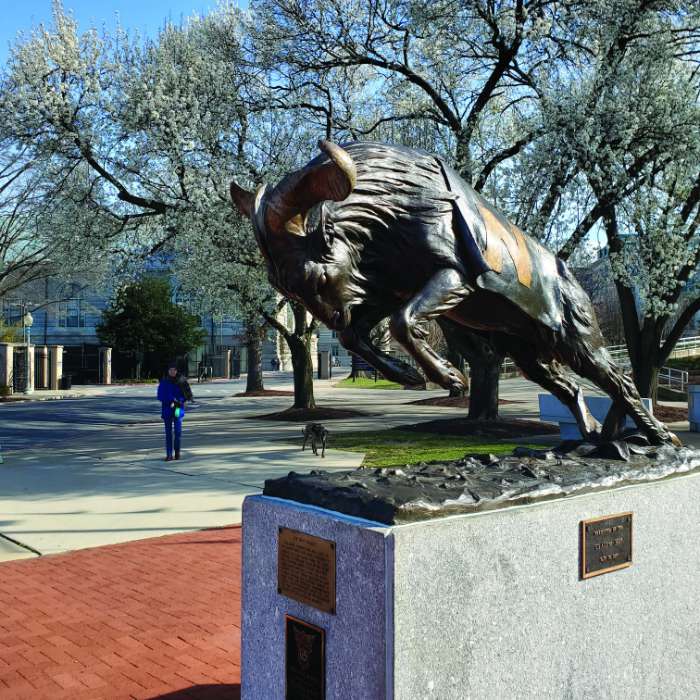
Sailing education is intrinsic to a midshipman’s training. Offshore Sailing Team director Jahn Tihansky puts it this way: “Sailing provides an ideal environment for professional training here at the Naval Academy. The dynamics of teamwork involving weather, strategy, navigation, sailing skills, and onboard systems provide midshipmen with numerous challenges where risk must constantly be evaluated and balanced against mission requirements. Alumni from across Navy and Marine Corps professional communities share how the lessons and skills they developed while sailing here continue to be some of the most valuable they’ve had in their careers.”
The following is a curated list of “Top 10” attractions. This “tour” takes approximately three hours and covers around four miles walking counterclockwise starting at the Visitors Center.
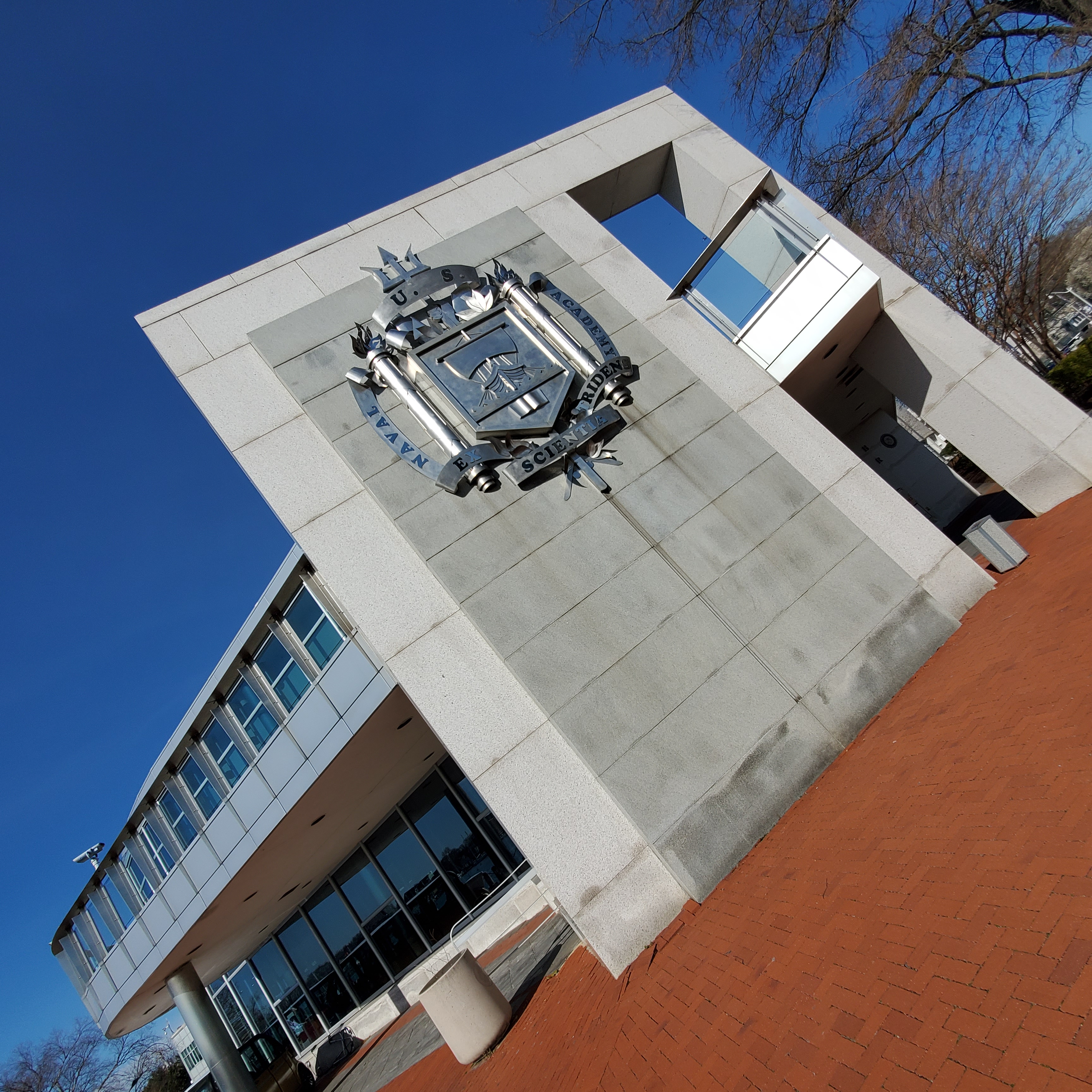
1. USNA Visitors Center
Located just inside the Main Gate, the Visitors Center should be the first stop on your USNA visit. Here, you can arrange to join a guided tour of the facilities. Tours leave frequently and cost around $14. If you’re into exploring on your own, the Visitors Center gives you a quick orientation to Academy history and student life.
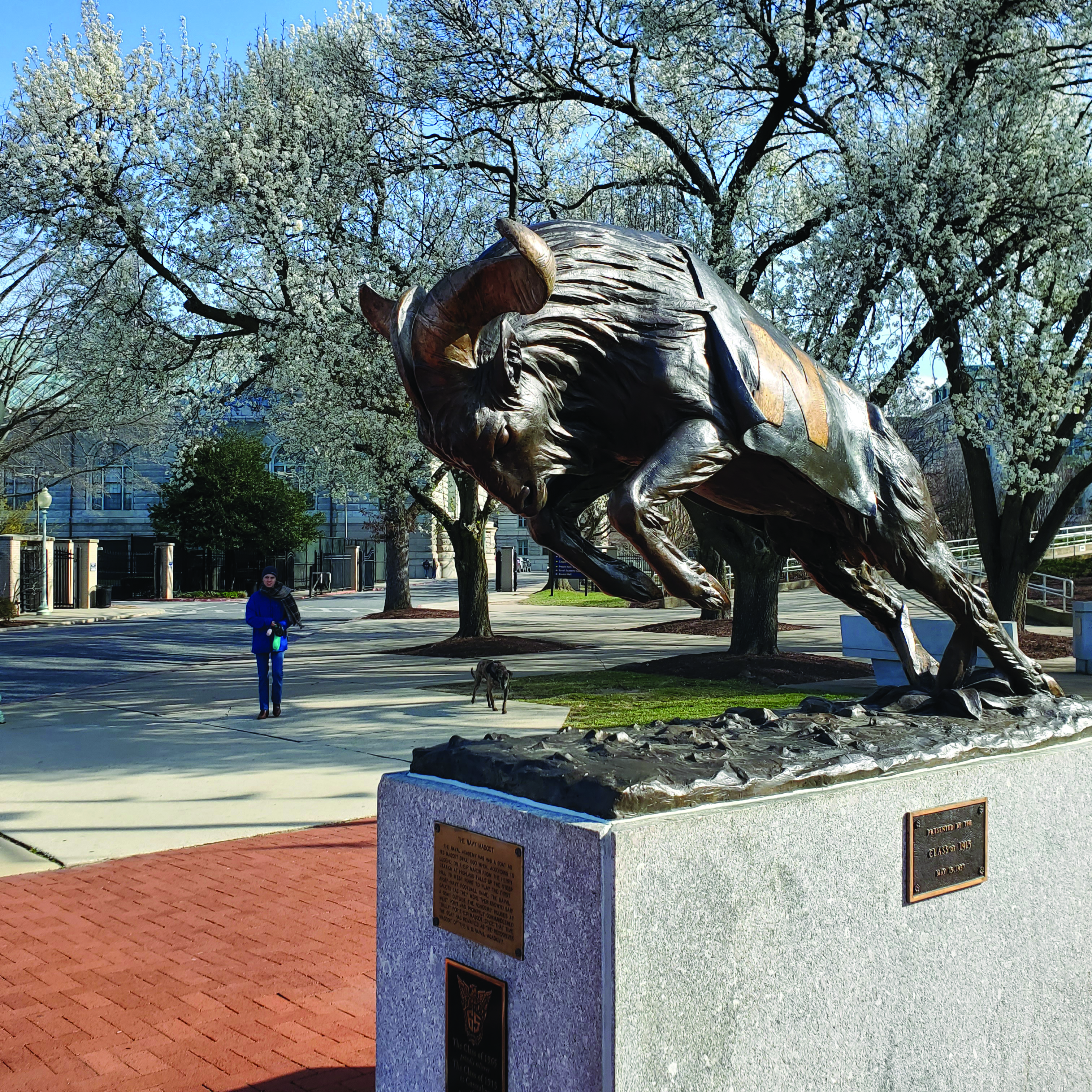
2. Bill the Goat Bronze Statue
Standing guard over the campus entrance adjacent to Gate 1, this 1957 statue memorializes the academy’s mascot. Legend has it that the first “Bill the Goat” made his debut as an unofficial mascot in 1893 after helping the midshipmen defeat a determined Army football team.
3. Triton Light
Located on the seawall where the Severn River meets Spa Creek, the Triton Light was first lighted in 1959. It is a flashing green light that stands 25 feet tall. Named for the Greek god Triton, the light shares its name with the USS Triton nuclear submarine which completed her historic submerged circumnavigation not long after the Triton Light was first turned on. The crew of the Triton collected samples of water from the 22 seas through which the boat had passed. The waters were then used to fill a globe built into the light. The light continues its service to mariners to this day.
4. Maine Foremast
Adjacent to the Triton Light sits the foremast of the USS Maine. The Maine was sunk in a mysterious explosion in Havana Harbor in 1898. Seventy percent of the ship’s crew perished. The mast was recovered in 1910 and placed in the yard in 1913. The slogan “Remember the Maine” became the rallying cry as the United States protected its interests in the Spanish-American War which lasted a scant three months.
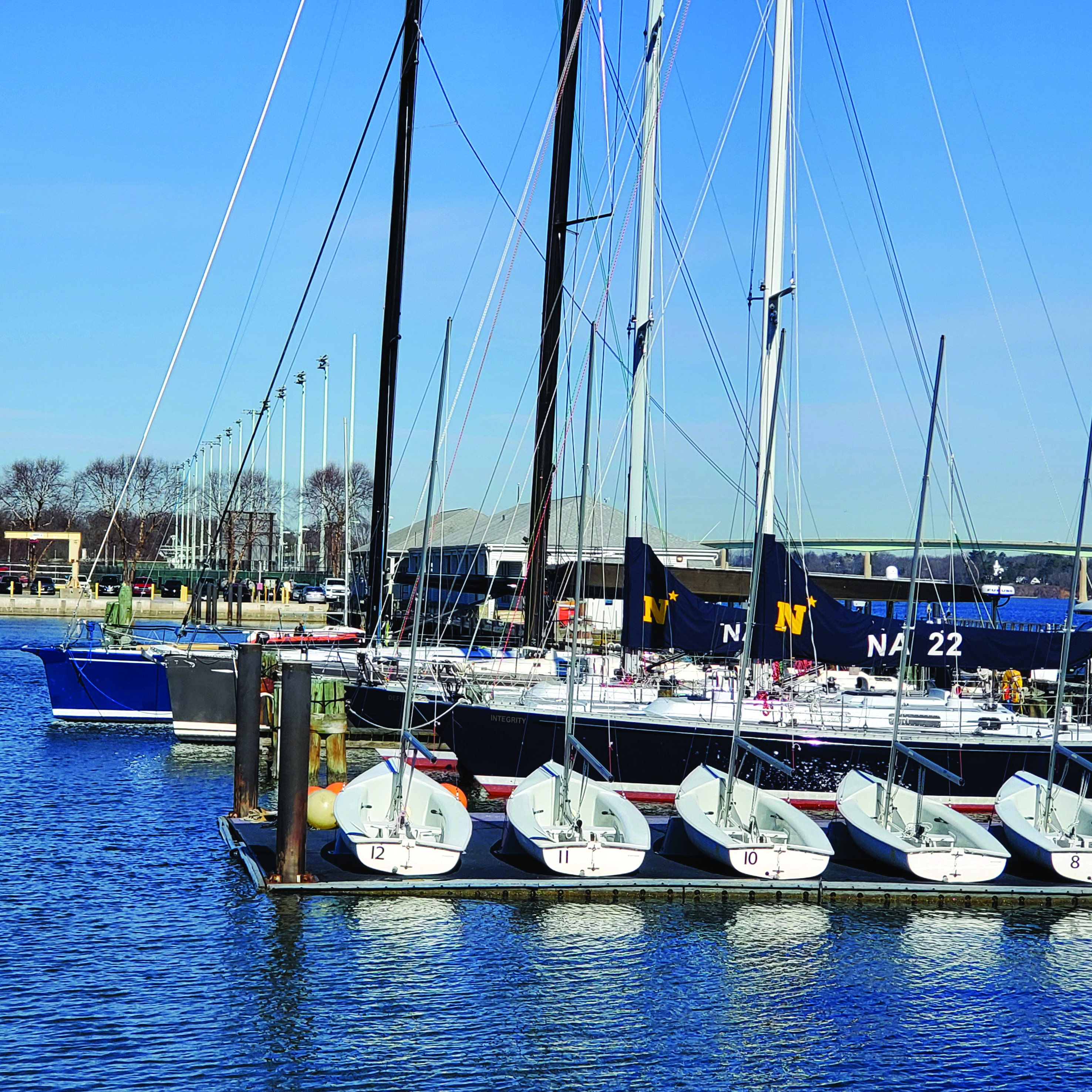
5. Santee Yacht Basin
Tucked into the northeast corner of the academy with easy access to the Bay’s Severn River is the USNA’s yacht harbor, home to the academy’s fleet of Navy 44 Mark II sail training craft as well as more than two dozen smaller sailboats midshipmen use for their introductory sailing instruction. At the corner of the basin stands the newly renovated Sailing Center. Currently off-limits to visitors, the Center serves as a focal point for USNA sailing education.
6. Jeannette Expedition Monument
Located in the cemetery on Hospital Point, the Jeannette Monument was erected in memory of the men who perished in the Jeannette Arctic Expedition in October 1881. The Jeannette was caught in an arctic flow and crushed. Three groups of sailors attempted to reach Siberia. The lead group captained by expedition leader George DeLong sailed more than 700 miles in frigid conditions. Upon landfall tragedy struck, and most of the crew perished. A second boat sank with all hands. A third boat reached Siberia and returned to search for Delong. They found two survivors and a stone cairn and wooden cross. Twenty of the original crew of 33 perished.
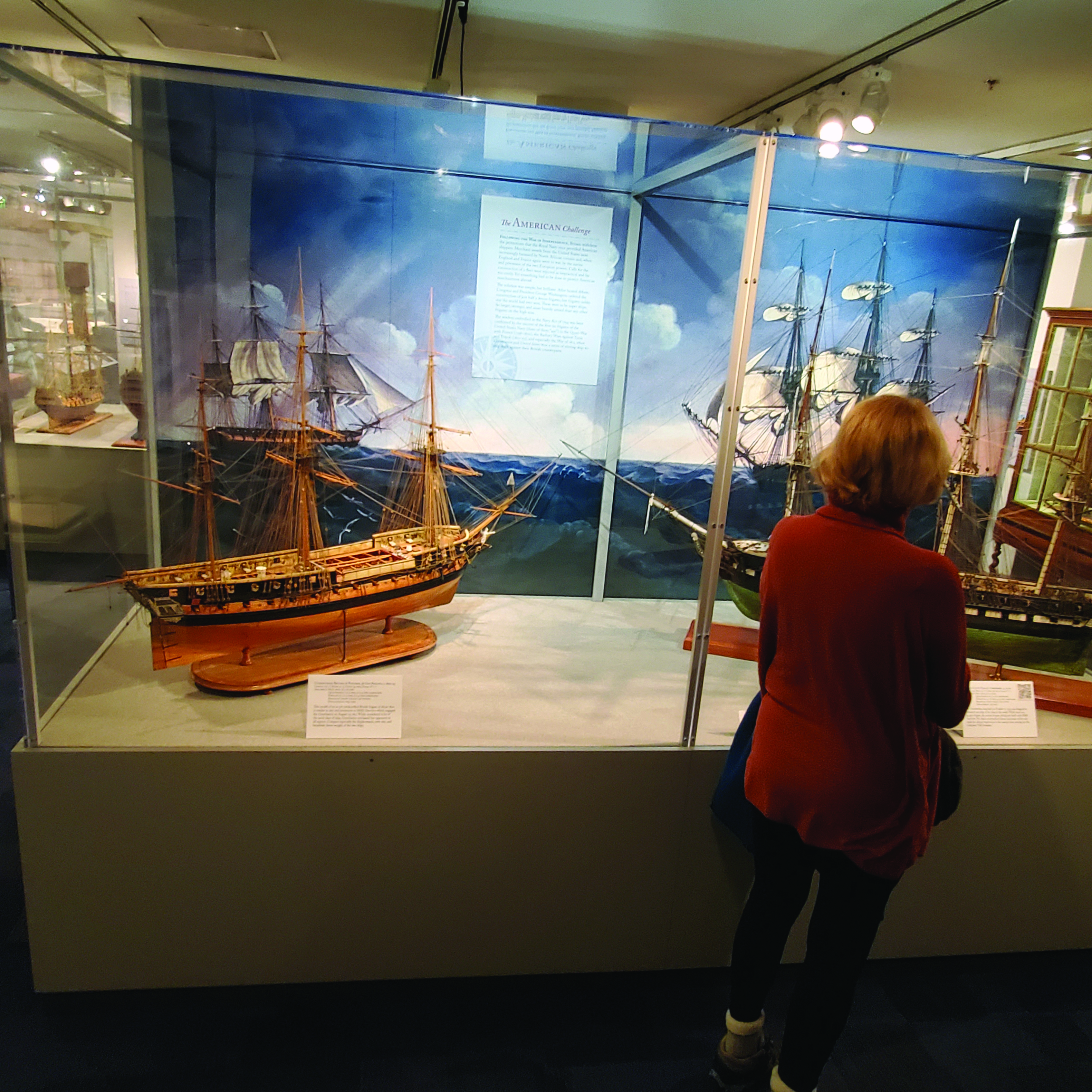
7. USNA Museum
Welcoming more than 100,000 visitors annually, the USNA Museum housed in Preble Hall, is home to an impressive collection of naval memorabilia including the Surrender Table from the USS Missouri; the Rogers Collection of shipyard models, said to be the largest and most extensive in the world; and the iconic “Don’t Give Up the Ship” flag flown by Oliver Hazard Perry in his victorious Battle of Lake Erie Campaign.
8. John Paul Jones Crypt
Located beneath the USNA Chapel, the John Paul Jones Crypt is a testament both to Jones’s naval accomplishments as well as the dedication of an American ambassador to France who initiated an exhaustive search for the body of Jones. Ambassador Porter finally found Jones’s remains. He had them disinterred, organized a postmortem confirming that the remains were indeed those of the naval hero, and organized the transfer of the remains to Annapolis. Jones’s remains were placed in a 21-ton marble sarcophagus, now the centerpiece of the Crypt. Jones is best remembered for his rejoinder when asked if he would surrender his ship, the Bonhomme Richard, after it was heavily damaged by enemy fire, “Sir, I have not yet begun to fight.”
9. Herndon Monument
Located directly across from the Chapel, the Herndon Monument stands silent sentinel over the quad 364 days of the year. On the 365th day, however, the area is turned into a slithering gob of vegetable grease, sweaty midshipmen bodies, and boisterous spectators. It’s all about teamwork as the academy’s plebes struggle to climb the 21-foot obelisk which has been slathered with approximately 200 pounds of vegetable shortening and doused with water sprayed by upperclassmen. The object of the exercise is to remove the plebe “dixie cup” hat from the top of the monument and replace it with an upperclassman’s cover. It’s not an easy task as plebes attempt to form a human pyramid to boost one of their classmates to the top. It generally takes from two to three hours to accomplish the task.
10. Tamanend (Tecumseh) Figurehead
There are no shortage of ship’s figureheads scattered around the yard. Most notable is the bronze sculpture of the native American Indian chief Tamanend of the Delaware tribe. A wooden version of this figurehead adorned the USS Delaware until she was scuttled to prevent her from falling into the hands of the Confederates during the early stages of the war between the states. The figurehead was salvaged and brought to the Yard in 1868 where it was placed on the walkway in front of Bancroft Hall. The wooden original was replaced by a bronze replica in 1920. The figurehead has gone by variety of names including Powhatan, King Philip, and Tecumseh.
Learn more at usna.edu.
Story and photos by Craig Ligibel




